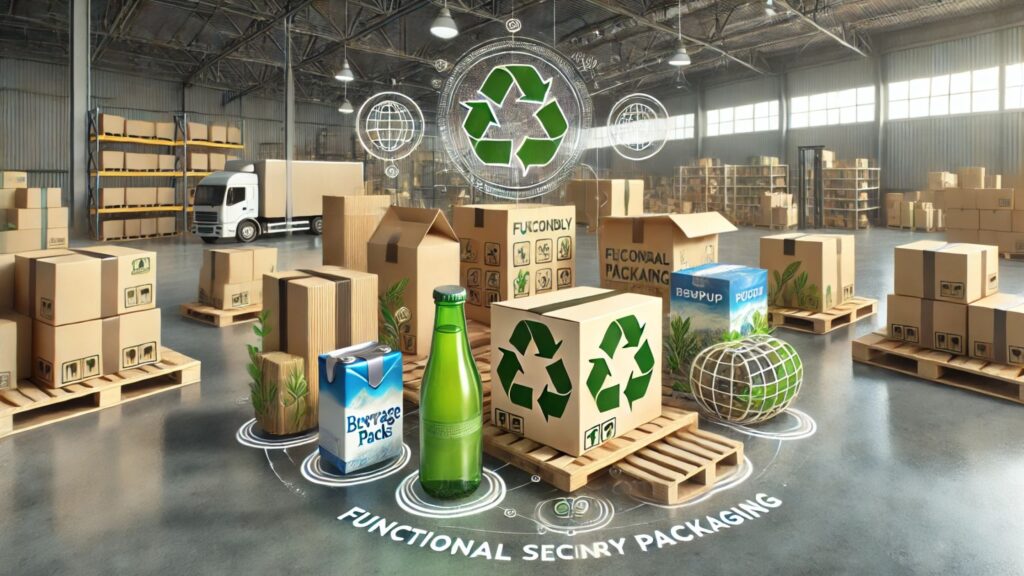In today’s competitive market, functional secondary packaging plays a vital role in product protection, logistics, and brand presentation. While primary packaging is in direct contact with the product, secondary packaging serves as an additional layer that groups, protects, and enhances the usability of products during transportation and display.
This article delves into the significance of functional secondary packaging, its key benefits, and how brands can optimize it for efficiency, sustainability, and consumer appeal.
Understanding Functional Secondary Packaging
Secondary packaging is designed to protect and organize multiple units of a product. It is not the primary container that holds the product itself (like a bottle, can, or blister pack) but rather the outer packaging that facilitates handling, transportation, and retail display.
Functional secondary packaging goes beyond basic containment and serves additional purposes such as:
-
Improving product safety by preventing damage during shipping and storage.
-
Enhancing convenience for retailers and consumers through easy-to-open and resealable designs.
-
Boosting brand identity with high-quality printing and innovative design elements.
-
Supporting sustainability goals by using eco-friendly and recyclable materials.
Common Types of Functional Secondary Packaging
Different industries use various forms of functional secondary packaging to meet their needs. Some of the most common types include:
-
Cartons and Boxes
-
Used in industries such as pharmaceuticals, food, and electronics.
-
Often made of cardboard, corrugated materials, or biodegradable options.
-
Provides structural support and space for branding.
-
-
Shrink Wrap and Stretch Film
-
Common in beverage and personal care industries.
-
Helps bundle multiple items together while ensuring tamper resistance.
-
Reduces the weight of packaging materials, lowering transportation costs.
-
-
Trays and Sleeves
-
Often seen in ready-to-eat food packaging and confectionery products.
-
Enhances the presentation of products while adding a layer of protection.
-
-
Plastic and Paper Inserts
-
Frequently used in fragile product packaging, such as electronics and glassware.
-
Provides cushioning and prevents movement inside the package.
-
-
Retail-Ready Packaging (RRP)
-
Designed for easy stacking and shelf display.
-
Reduces the need for additional unpacking and labor costs at retail stores.
-
Key Benefits of Functional Secondary Packaging
1. Enhanced Product Protection
One of the main purposes of functional secondary packaging is to protect products from external elements such as moisture, temperature changes, and physical damage. This is particularly crucial in industries like pharmaceuticals and food, where product integrity directly impacts consumer safety.
2. Efficient Logistics and Transportation
Properly designed secondary packaging optimizes space during storage and shipping, reducing material waste and transportation costs. For example, stackable cartons and shrink-wrapped pallets allow more products to be transported efficiently, lowering overall logistics expenses.
3. Improved Retail and Consumer Convenience
Functional secondary packaging enhances the shopping experience by making products easier to handle, identify, and access. Features like perforated openings, resealable designs, and easy-open mechanisms help consumers and retailers interact with products more efficiently.
4. Branding and Marketing Advantages
Customized secondary packaging provides a canvas for branding, logos, and product information. High-quality printing, vibrant colors, and creative designs help differentiate products on store shelves, attract customers, and enhance brand recognition.
5. Sustainability and Eco-Friendly Solutions
With growing environmental concerns, brands are adopting functional secondary packaging that reduces waste and promotes recyclability. Using biodegradable materials, minimalistic designs, and reusable packaging helps companies align with sustainability goals while appealing to eco-conscious consumers.
How to Optimize Functional Secondary Packaging
To maximize the benefits of functional secondary packaging, companies should consider the following strategies:
1. Use Sustainable Materials
Opt for recyclable, biodegradable, or compostable packaging materials. Cardboard, molded pulp, and plant-based plastics are excellent choices that balance functionality and sustainability.
2. Focus on Lightweight and Compact Designs
Reducing packaging weight without compromising durability can lower shipping costs and environmental impact. Nested or foldable designs can also save space in storage and transportation.
3. Incorporate Smart Packaging Technology
Modern secondary packaging can integrate RFID tags, QR codes, and NFC chips for inventory tracking, authentication, and interactive customer engagement. This improves supply chain efficiency and enhances consumer trust.
4. Ensure Compliance with Industry Standards
Different industries have specific packaging regulations to ensure safety and sustainability. Brands must adhere to guidelines such as FDA (for food and pharma), FSC (for sustainable materials), and ISO standards for packaging quality.
5. Test Packaging Durability and Performance
Before finalizing secondary packaging designs, conducting drop tests, vibration tests, and compression tests ensures that the packaging can withstand transportation and handling stress.
Conclusion
Functional secondary packaging is more than just an outer shell—it plays a crucial role in protecting products, enhancing branding, and improving logistics. By leveraging innovative designs, sustainable materials, and smart packaging technologies, businesses can enhance efficiency, reduce costs, and meet consumer expectations.
As industries continue to evolve, investing in well-designed secondary packaging will not only optimize supply chains but also create a positive impact on the environment and customer experience. Whether it’s a simple carton or an advanced smart packaging solution, the right functional secondary packaging can be a game-changer for brands in today’s competitive market.
Related Articles
- Understanding Food Secondary Packaging: Importance, Types, and Benefits
- Pharma Secondary Packaging: Importance, Types, and Best Practices
- The Role of Secondary Packaging Equipment in Modern Manufacturing
- Sustainable Secondary Packaging: A Key to Greener Supply Chains
- Kraft Paper Packaging: A Sustainable and Versatile Choice for Businesses
- The Future of Carton Packaging: Sustainability, Innovation, and Market Trends
- Polybag Packaging: Benefits, Uses, and Sustainability
- The Versatility and Importance of Plastic Wrap Packaging
- Shredded Paper for Packaging: A Sustainable and Cost-Effective Solution
- Bubble Packaging: The Ultimate Solution for Protection and Sustainability

